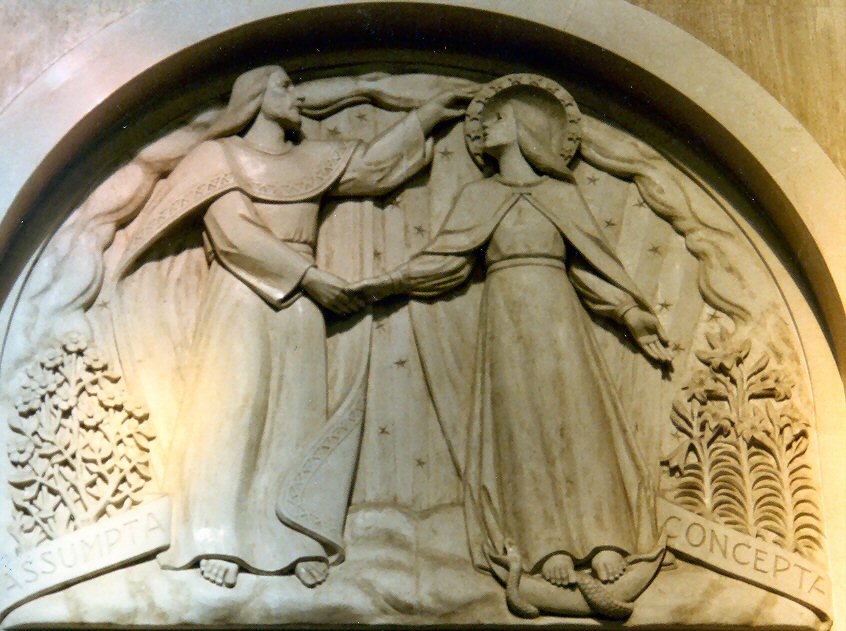
Mary, Mother of God
by Rev. Msgr. Thomas J. Cassidy
January 1, 2008

New Year's Day used to be celebrated as the Feast of the Circumcision of the Lord. The Gospel of St. Luke, which was just read, clearly reflects this: "When the eighth day arrived for his circumcision, the name Jesus was given to the child (Luke 2).
For Hebrew males at the time of Jesus' birth, circumcision was more than a matter of hygienic protocol. It was, rather, an important religious ritual. (Usually conducted in the Temple, or in a synagogue, by a Rabbi). Through this ritual action the Israelite male was incorporated into and recognized as a member of the Chosen People of Yahweh. In our Christian tradition the Sacrament of Baptism is the first rite of initiation. By it, females, as well as males, are incorporated into the 'Body of Christ' on earth, the Church. Thus, there is a parallel between these religious rituals of the Old and New Testaments. For many decades it was not uncommon to hear the expression: "Christians are spiritual Semites." Today we often refer to the common moral principles of our Judaeo-Christian heritage.
The Second Vatican Council; introduced the change to the current practice of celebrating January 1st as the Solemnity of Mary, Mother of God. A centuries-old point of controversy in the Catholic Church, and in other Christian denominations, is the position in which Mary was viewed. A specific point of misunderstanding and annoyance to non-Catholics has been the prominence of pious devotions and prayers directed to Mary. We have often heard the complaint" "Catholics worship Mary." Many, even today, have not fully understood the distinction between "worship" - (which is proper only to the Divine Persons of the Blessed Trinity) and "atria" (or 'veneration'), and prayers of intercession which are directed to Mary, or to other saints.
In the early centuries of Christianity, the Church had to contend with and give answer to the so-called "Christological heresies" - perceptions of the person of Jesus Christ, some of the early heretical teachings maintained that Jesus was not fully Divine because he very obviously possessed a complete human nature, for he was, "a man like us in all things except sin." Other heretical schools of thought maintained that because Jesus was the Incarnate 'Son of God', eternally divine, his divinity was somehow superimposed on his human nature. And so it went, back and forth. It is therefore, easy to understand that Mary's position would easily get entangled in the controversies concerning the dual (two-fold) nature in her son.
The position and titles attributed to Mary crystallized in the Nestorian Heresy, c. A.D. 430. Nestorius, the Patriarch of Constantinople, and his followers refused to recognize Mary as, "Mother of God," they insisted that she be called, simple, "Mother of Christ." In 431, the Council of Ephesus affirmed that since Mary, by her contribution to the formation of Christ's humanity; and since there is only one "person" in Jesus Christ, (but possessing two distinct natures), Mary bore the Incarnate-God, Jesus Christ, "True God and True Man" (Creed) in her womb. The council of Ephesus applied the Greek term Theotokos (Literally, 'The God-Bearer') to Mary.
Mary, the Theotokos, bearer of the God-Man, Jesus Christ, holds the unique position as the woman chosen by God to forge the link between the humanity and divinity of Christ. We do not hesitate to recognize and honor Mary as "Mother of God" because of the role she played in the Incarnation of God's 'only-begotten Son.' We pray that God will hasten the day when all Christians recognize her divine maternity. She is, indeed, the singular and extremely blessed woman of all ages. With confidence, we constantly petition: "Holy Mary, Mother of God, pray for us sinners . . . ."